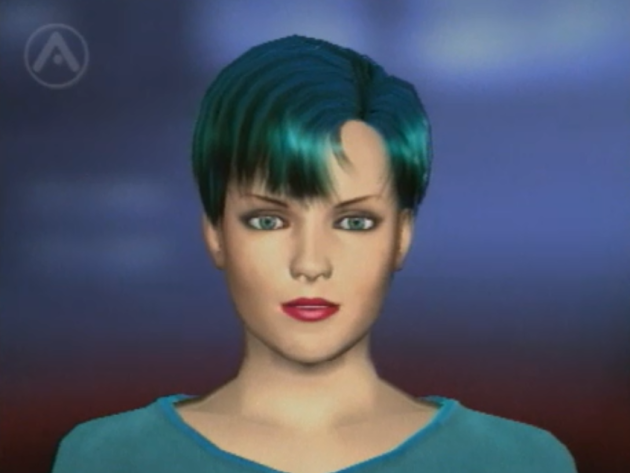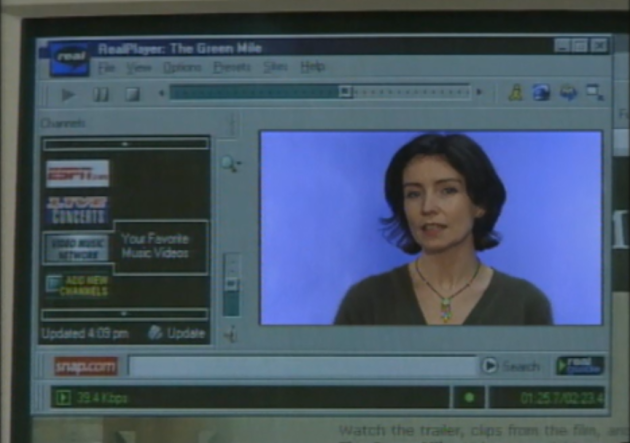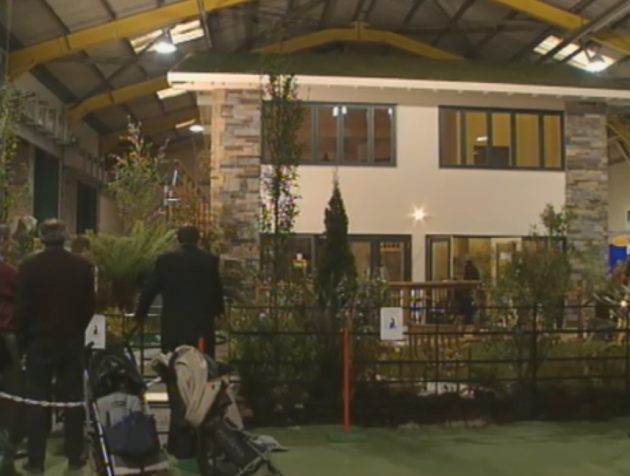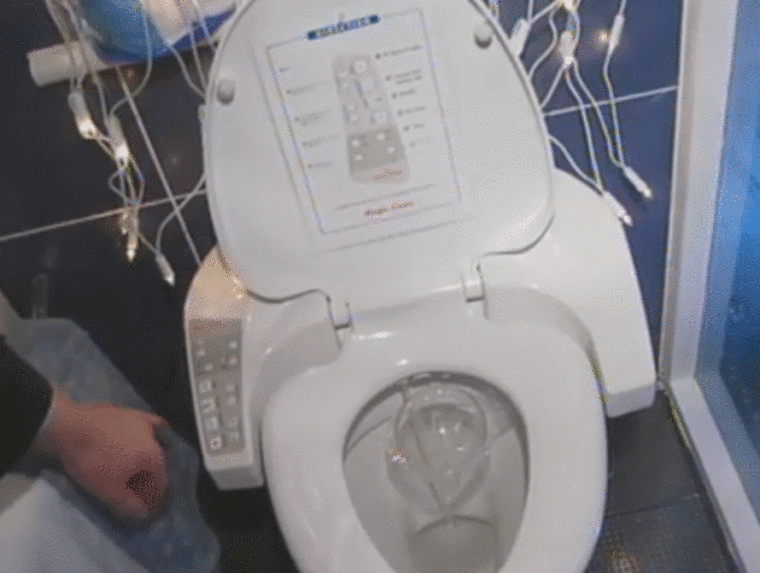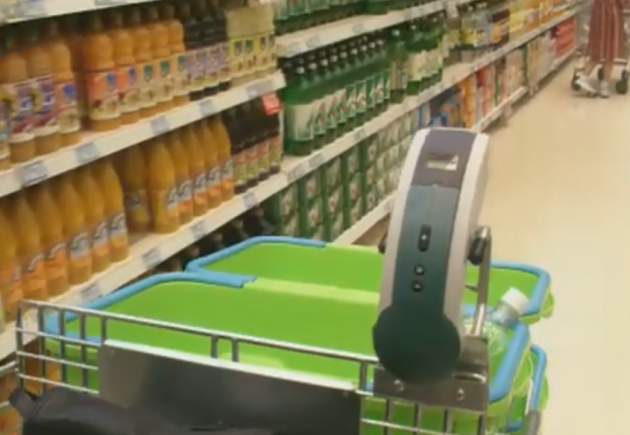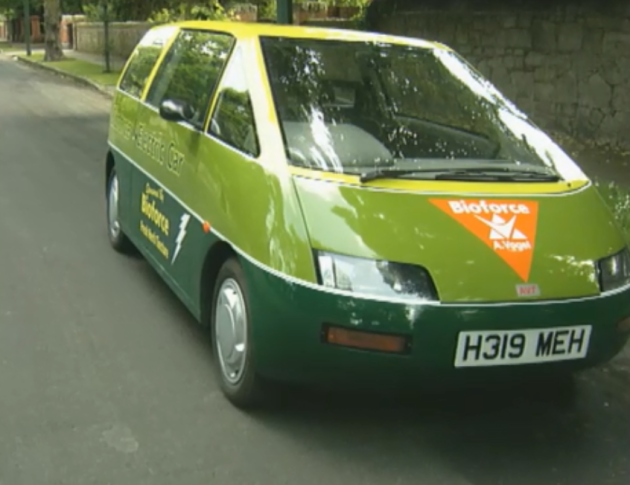TOWARDS THE END of the 20th century, we all had pretty high hopes for what the future would hold.
Luckily, we have already managed to far exceed some of our expectations for technology. Let’s take a quick look at Ananova, for example. In April 2000, RTÉ News reported that we could be living in a future where we consumed our news through virtual newsreaders. One such virtual newsreader was a character designed based off of the appearance of Kylie Minogue, Carol Vorderman and Victoria Beckham.
Ananova’s website existed solely to relay news to people, but it also featured some detailed fictions about Ananova’s life. Her wikipedia recounts how the website described her as a 28-year-old ‘girl about town’ who stands at 5’8″ and loves Oasis and The Simpsons. Aul Ananova would be 46 years old now, if she hadn’t gotten the axe back in 2004.
Amazingly, it took a team of 38 developers and designers to keep Ananova running. As you could safely assume from her physical appearance and the celebrities who inspired her look, very few of these team members were women. On top of the 38 developers and designers, there were another 35 individuals assigned to the content team, who found the news stories.
So, in total it took around 70 people to keep this virtual newsreader running. Imagine how much trouble they could have saved themselves if they just hired a handful of human newsreaders.
However, there was definitely some kind of sick capitalist vision behind Ananova. She bragged to RTÉ:
I never get sick. I don’t need holidays. I won’t ask for a pay rise. I can be virtually everywhere at once. I just love my work.
Is it any wonder that the generation who created Ananova were responsible for the incredible mess that is the gig economy?
It wasn’t until 2000 that big businesses decided to engage with the internet, and in this RTÉ News segment (which features newsreader Susan Byrne inside a poorly edited RealPlayer window on Windows 98), they spoke to some experts.
Cormac Callanan, President of the European Internet Providers Association said it was “the first time that major media moguls have endorsed the internet as a successful medium.”
All of the hype surrounding the endless possibilities provided by the internet had people very excited about the idea of ‘cyberpubs‘ where a few pals could go and drink some pints while surfing the net. They all sat around a Windows 95 PC drinking Guinness and writing back to emails together.
For a second, you’d almost scoff at them, but then you realise that’s pretty much exactly what we do nowadays, just with iPhones. Now every pub is a cyberpub.
Outside of the internet, technology was supposed to play a big role in our everyday lives.
Of course, it actually does now. But not in the ways that we had expected at the turn of the century. The Ideal Homes Exhibition in the RDS back in 2003 featured this wooden house, which had a roof made of grass:
It changes with the seasons, so it won’t stay green. It’ll be a red roof, it’ll be a flowered-roof and the roof will then look like a meadow.
Imagine the state of that thing during the 2018 heatwave. This exhibition also hoped that we’d have a lot more decorations made of recycled glass in our homes, and suggested that Japanese toilets were the way forward. We can’t help but feel a little bit robbed of this novelty.
In some ways, this feels like the housing equivalent of Homer Simpson’s car design.
Outside of the home, our life was supposed to be vastly improved by the introduction of Superquinn’s Super-Scan devices.
The customers were in awe of this device (which, in fairness still exists today).
I like it a lot. We’ve been doing it since the beginning and I don’t think I could shop the other way.
I’m very pleased with it, I think it’s wonderful. It’s quick. It’s accurate. You always know what you spent. When you come to the desk you have the correct money.
Today’s iteration of the Super-Scan doesn’t appeal to every customer, but it’s obviously still pretty handy for the people who do decide to use it. Did it revolutionise shopping though? Not really, no.
The biggest change we’ve seen technology make in the world of grocery shopping was the introduction of self service checkouts, which replace tax-paying human staff members.
In 1998, we also had some pretty high hopes for the future of electric cars in Ireland.
RTÉ spoke to several people who were very optimistic about the potential of electric cars in Ireland. Ten years later, in 2008, the government set a goal hoping that 10% of the cars in Ireland (the equivalent of 200,000) would be fueled by electricity by 2020. With just two years to go, Fianna Fail are predicting that the actual figure will eventually be 8,000.

